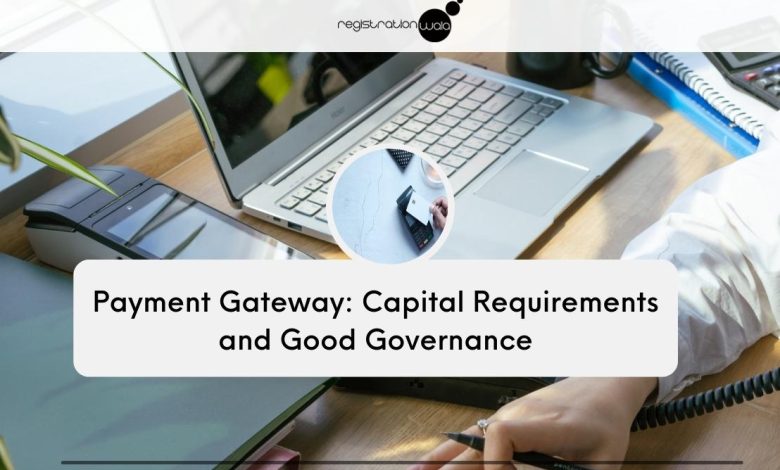
Capital Requirement
Every Payment Gateway applicant must conform to the standards relating to the capital requirements. The Reserve Bank of India sets these standards to regulate the Payment Gateway Systems in India effectively. We have discussed all these capital requirements under the following heading:
Existing Payment Gateway Net Worth
Every existing Payment Gateway License holder must achieve a net worth of ₹15 crores by March 31, 2021, and a net worth of ₹25 crores by the end of the third financial year, i.e., on or before March 31, 2023. In addition, the PA license holder must maintain a net worth of ₹25 crores at all times.
New Payment Gateway Net Worth
New Payment Gateway License holder must have a minimum net worth of ₹15 crores at the time of application for authorization. They must attain a net worth of ₹25 crores by the end of the third financial year of grant of authorization. The new PA must maintain a net worth of ₹25 crores at all times.
Net Worth Composition
Net-worth of a licensed Payment Gateway must consist of the following:
- Paid-Up Equity capital
- Preference Shares that are compulsorily convertible to equity
- Free Reserves
- Balance in Share Premium Account
- Capital Reserves
These capital reserves represent a surplus arising from the sale proceeds of assets. But these reserves are not created by revaluation of assets adjusted for accumulated loss balance, the book value of intangible assets, and deferred revenue expenditure.
Compulsorily convertible preference shares can be either non-cumulative or cumulative. Also, they must be compulsorily convertible into equity shares. Finally, the shareholder agreements must specifically prohibit any withdrawal of this preference capital at any time.
Foreign Direct Investment
Entities having Foreign Direct Investment (FDI) must be guided by the Government of India Consolidated Foreign Direct Investment Policy and the relevant foreign exchange management regulations on this subject.
CA Certification
- All licensed Payment Gateways must submit a certificate in the enclosed format from their Chartered Accountants (CA) to evidence compliance with the applicable net-worth requirement while submitting the application for authorization.
- In addition, newly incorporated non-bank entities which may not have an audited statement of financial accounts must submit a certificate in the enclosed format from their Chartered Accountants regarding the current net worth along with a provisional balance sheet.
Default on submission
- All licensed Payment Gateways that don’t comply with the net-worth requirement within the stipulated time frame will wind up payment aggregation business.
- Therefore, the banks maintaining nodal or escrow accounts of such entities must monitor and report compliance in this regard.
Governance
Good governance is needed everywhere. The same is necessary for the Payment Gateway System. Here, we have discussed the guidelines on how to run a Payment Gateway System in India effectively. There should ni good governance in the process of this license.
Fit and Proper Criteria
- Every licensed Payment Gateway must ensure that they are managed professionally.
- The promoters of the entity must satisfy the fit and proper criteria as prescribed by RBI.
- The directors of the applicant entity must submit a declaration in the enclosed format.
- RBI must also check the fit and proper status of the applicant entity.
- Also, they must check the management by obtaining inputs from other regulators, government departments, etc., as they deem fit.
- The RBI will return the applications of those entities not meeting the eligibility criteria or not in the prescribed form with all details.
Change in Management in Payment Gateway
- The Gateway owner must communicate any takeover or acquisition of control or change in management of a non-bank Payment Gateway by way of a letter to the Chief General Manager, Department of Payment and Settlement Systems (DPSS), RBI, Central Office, Mumbai.
- The Gateway owner must communicate the information within 15 days with complete details, including Declaration as well as the Undertaking by each of the new directors, if any.
- Also, the RBI must examine the fit and proper status of the management and place reasonable restrictions on such changes.
Responsibilities of involved Parties
Agreements between Payment Gateways, merchants, acquiring banks, as well as all the other stakeholders must delineate the roles and responsibilities of the involved parties in sorting or handling complaints, refund / failed transactions, return policy, customer grievance redressal (including turnaround time for resolving queries), dispute resolution mechanism, reconciliation, etc.
Dispute Redressal System
Every licensed Payment Gateway must disclose the necessary comprehensive information. These information include merchant policies, customer grievances, privacy policy, and other terms and conditions on the website and mobile application.
Also Read: The Private Limited Company Registration – Complete Process
Board Approved Policy
Every Payment Gateway System must have a Board Approved Policy for disposal of complaints, dispute resolution mechanism, timelines for processing refunds, etc. The Gateway company must design a policy so that the RBI instructions on Turn Around Time (TAT) for resolving failed transactions are adequately taken care of. The licensed Gateways must ensure any future instructions in this regard.




